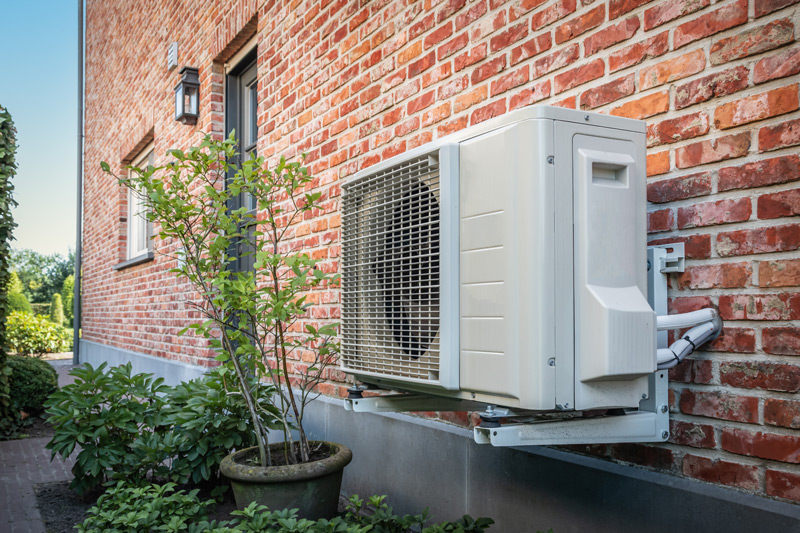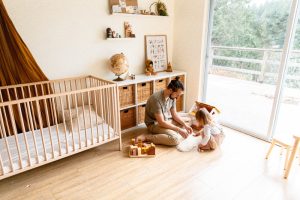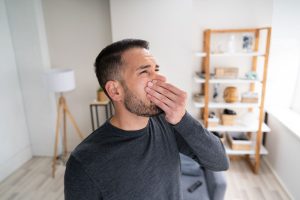It’s hard to believe that fall is just around the corner. After all, Sudbury experienced a crazy heat wave just a few days ago!
Heat warnings of 29 degrees Celsius sent us all running indoors to cool down. Thank goodness for well-working air conditioners!
We only had to make a few quick repair visits to help keep our clients cool during those sweltering days.
Thankfully, the rest of September looks to be cooling down. Highs of 22 degrees and lows of 11 degrees signal that summer is coming to a close. And while fall isn’t here yet, the coming cold is inevitable!
We’ve experienced too many surprise freezes over the years to leave you hanging this fall. Our team is here to help prepare your HVAC before that first frost hits.
In today’s article, we’ll provide everything you need to know about prepping your heat pump for the cold. Keep reading to ensure your system operates at maximum efficiency and performance!
Heat Pumps Operate Differently In The Cold
Is this your first year with a heat pump? If so, congratulations on making the switch! Heat pumps are a great investment for your budget and the environment.
You probably know how your system operated over the summer months. But do you know how it works in the winter?
The cooling process is essentially reversed!
Instead of moving heat from the indoors to the outdoors, it transfers outdoor heat into your home.
Depending on the type of heat pump you have, your system extracts heat from the air, ground or water source.
Incredible, right?
Most basic heat pumps operate efficiently until -8 degrees. But there are also models that can work in temperatures as low as -30 degrees!
Learn More About How Heat Pumps Work Here.
7 Tips To Prepare Your Heat Pump For The Cold
October will be here before you know it! Our team has put together a quick list to help ensure your heat pump operates at peak performance throughout the cold season ahead.
Let’s get started!
1. Keep the area surrounding your heat pump unobstructed.
If you had a traditional A/C before installing a heat pump, you would have done this already. Typically, we recommend this simple care step for all outdoor units.
Here’s why:
Shrubs, bushes and other debris can prevent your outdoor unit from operating correctly. These obstructions restrict airflow and can even cause damage to your system.
Keeping the area surrounding your outdoor HVAC unit clear is vital. It ensures maximum efficiency and proper airflow – resulting in better overall performance.
Note: Refer to your system manual for clearance recommendations on your specific model.
2. Protect your outdoor unit from the weather.
Besides keeping your unit clear of obstructions, you also want to protect it from the weather.
But be careful!
Traditional A/C coverings can actually obstruct airflow, just as a nearby shrub can.
For this reason, we don’t recommend traditional A/C coverings for your heat pump. Instead, we suggest installing a cover designed specifically by your unit’s manufacturer.
This cover will
a) Block your unit from falling snow and ice.
b) Act as a windbreaker.
3. Schedule preventative maintenance.
Next up, schedule your annual preventative maintenance visit!
While your heat pump is pretty self-sufficient, we do recommend booking a yearly visit.
During this maintenance visit, our techs will:
- Lubricate mechanical components.
- Measure refrigerant levels.
- Check/Fix any cracks and leaks.
- Inspect belts, pulleys and other parts.
- Replace the air filter.
- Inspect electrical wiring/connections.
- Inspect blower wheels and motors.
- Clean condenser coil fans.
- Flush out the drain line.
- Test heat pump controls.
- Check the defrost function.
- Monitor coil temperatures.
- Check safety features.
- Test the thermostat.
This may seem like an extensive list, but each is essential in
a) Ensuring maximum unit efficiency
b) Preventing mid-season breakdowns/failures, and
c_ Ensuring peak performance.
Book your fall preventative maintenance visit with our Campeau Heating team today!
4. Clean your ductwork.
Since a heat pump is a form of whole-house heating and cooling, your ducts will also need a thorough cleaning.
This maintenance step is typically forgotten (or avoided) by most homeowners. After all, out of sight, out of mind, right?
Maybe not.
The longer you wait to clean your ducts, the worse your air quality will be.
Over time, dust and debris start to accumulate in your ductwork. This can worsen the air quality in your home and cause your system to work harder – lowering efficiency.
Our Campeau Heating team recommends cleaning your ducts every 3-5 years.
5. Clean your air vents and registers.
While you’re at it, don’t forget to clean your air vents/ and registers too!
You’d be surprised how grimy these can get over time. Unfortunately, it’s just another one of those tasks easily put on the back burner.
However, the good thing about this job is that it doesn’t need a routine schedule. Cleaning your air vents and registers is typically done on an as-needed basis.
6. Replace your air filter.
If you’ve already scheduled your preventative maintenance visit, skip this step! Your techs will take care of your filter switch for you.
However, if you aren’t scheduling a maintenance visit this fall, listen up!
Changing your air filter at least every 90 days is crucial for good air quality and system efficiency. This simple step prevents system failure, lowers energy bills and removes health risks.
7. Change your thermostat from “cool” to “heat”.
The final step is switching your thermostat from automatic cooling to automatic heating. This switch reverses the valve inside your heat pump – causing it to work in reverse. Instead of pulling heat from the indoors to the outdoors, it will do the opposite!
Remember, a heat pump isn’t a furnace. You may notice that air from your vents seems cooler than typical furnace heat. This is normal!
Heat pumps transfer heat rather than create it. So, while the warmth you feel may seem minimal, it is highly efficient.
Beware of Your Heat Pump’s Defrost Cycle
You’ll typically notice the defrost cycle kick on in -30-degree weather.
The purpose of the defrost cycle is to remove layers of ice covering your outdoor unit.
We usually warn our heat pump customers about this function, since it can seem unnatural. But, this function is actually automatic and 100% necessary.
It’s also typically not something you need to worry about. But you should know when it isn’t working correctly.
If the defrost cycle operates correctly, the process will take about 10-15 minutes. During this time, you’ll probably also notice that the air from your vents feels cool.
Don’t worry! It’ll heat back up soon.
If the defrost cycle isn’t operating correctly, you may notice two things:
a) There is a large amount of ice covering your heat pump. This would mean the system failed to remove the ice automatically.
b) The defrost cycle kicks on too often. This could point to an inefficient system or a necessary repair.
If either of these things happens, call your Campeau Heating technician!
Get In Touch
Are you ready for the fall season ahead? Our team ensures your HVAC is ready to keep you and your family warm all season long.
Preparing your heat pump for the cold ensures peak:
- Performance,
- Efficiency,
- Savings and
- Comfort.
Need help prepping your system? Give us a call at 705-560-2441.



